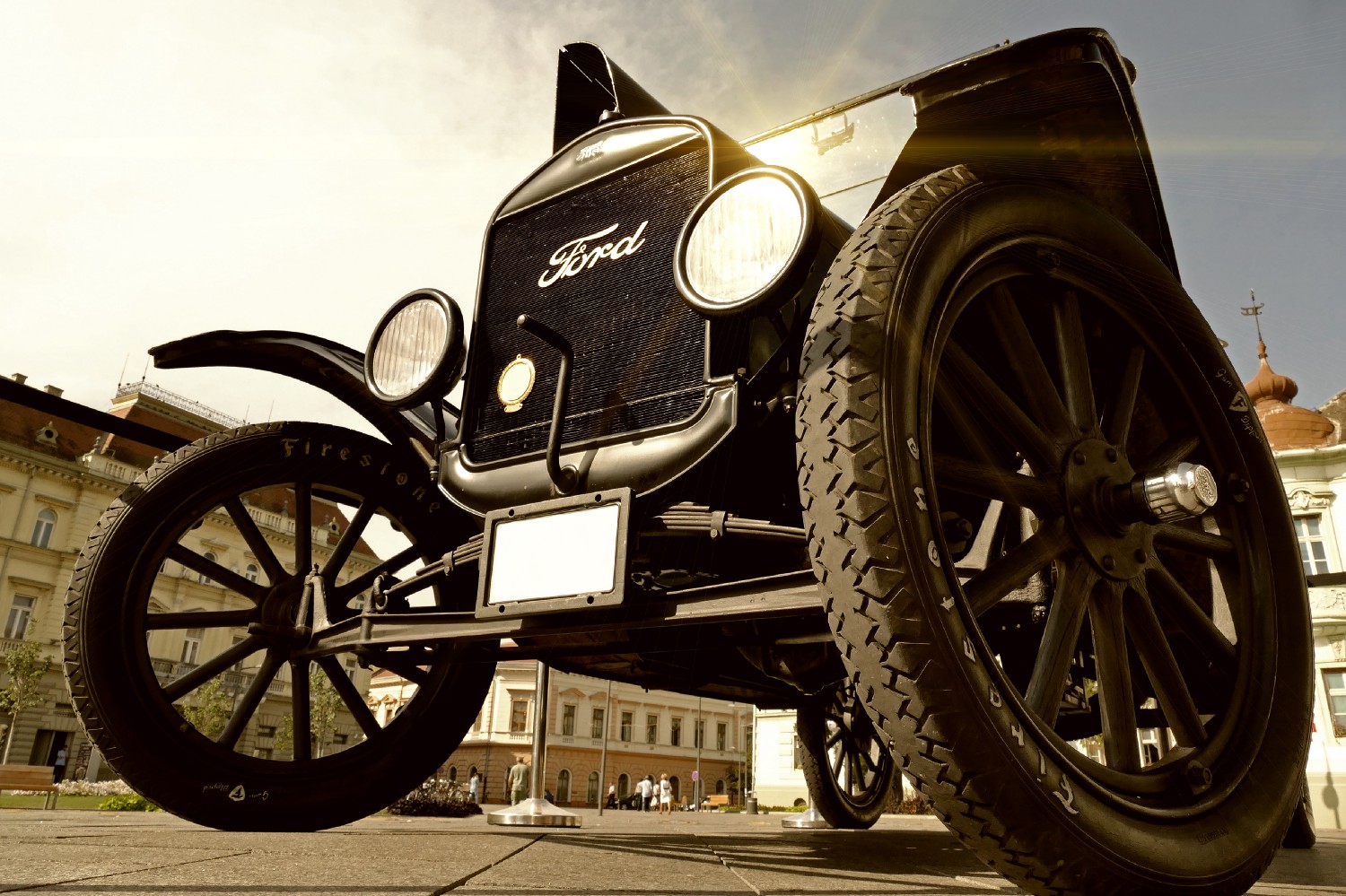What I learned serving on Ford’s task force on sustainability
Before there was the minivan there was the station wagon. It was the car families owned in the sixties and I can never remember when our family was without one. Ford was the company that introduced the Model T, the first simple and affordable automobile in 1903. They built trucks for the US Military in 1941 and created legends like the Ford Thunderbird in 1954 and the Mustang in 1964. Since it’s inception, Ford was a cutting edge company that was always looking to innovate and improve its technology. To us it said “America”, which was an important feature in the post-war era and part of my family’s fascination with the brand.
We owned a series of Ford wagons in a variety of colors including the Ford Country Squire LTD with its classic wood paneled exterior. Every summer my Mom loaded the four of us kids into the wagon to visit my grandparents in Colorado, laying down the backseat so we could stretch out our legs on a foam mattress that she had specially cut for this purpose. Her idea was that we would pass the time quietly reading, but the truth was my three brothers preferred to poke and prod and harass each other. As the only girl I often got the privilege of riding shot gun in the front seat where I learned to hone my skills as a map reader. My first car was a Ford Pinto and by the time I got to college I got to take the last Ford station wagon we owned with me. Even in light blue, it was not the sportiest look for a college student, but having that car did increase my popularity and added a few more Ford memories to the ones I already had.
Having so much of my childhood rooted in the iconic American history of this company, I was delighted when I was invited me to join a Ford task force on sustainability. I admit that unlike my mother who had never driven anything but a Ford, I had broadened my horizons to include other auto makers so I didn’t know what to expect the first time I attended a media event at the Dearborn headquarters, but I did not expect to discover that a company with this much longevity and now led by William Clay Ford, Jr — the great-grandson of Henry Ford, would have continued to be as innovative and as focused on a sustainable and environmentally friendly future as it is.
Here’s just some of what I’ve learned:
• Ford is investing $4.5 billion in electrified vehicle solutions with a plan to add 13 new EVs to their portfolio by 2020.
• They believe in science-based climate change and doing their part to stabilize the atmospheric concentration of CO2 at 450 parts per million, the level that many believe may avoid the most serious side effects of climate change.
• Ford has created a Restricted Substance Management Standard which prohibits greenhouse gases and replaced all chlorofluorocarbons refrigerants with hydrofluorocarbons which do not contribute to ozone depletion and have significantly lower global warming impacts.
• 95% of the materials in Ford vehicles can be recovered, recycled or reused.
• Ford recycles enough aluminum scrap to build the equivalent of 30,000 F-150 truck bodies every month!
• Between 2013 and 2015 Ford’s manufacturing strategies reduced water usage by 5.6 percent per vehicle.
• They’re collaborating with governments and NGOs to develop and implement best practices to address water challenges including access, sanitation and hygiene.
• Ecoboost engines designed for fuel efficiency and to reduce CO2 emissions in gasoline-powered vehicles are part of the reason the 2016 Ford F-150 was awarded Truck of the Year for 2016 by the Green Car Journal.
• Ford is looking at ways to use voice activated in-vehicle communication systems to improve in-car health and wellness like the Allergy Alert app that lets drivers check pollen counts.
There was a time not that long ago when imported cars were flooding the market with technologically advanced options and challenging the American Auto industry. That’s no longer the case with Ford who now competes on the same playing field with the imports. I believe this has everything to do with their commitment to sustainability and how they define it. Like myself, who believes it’s about living with a green heart every hour of every day, Ford sees sustainability as more than a superior end product. They see it as the way in which they do business. That kind of thinking is why for the seventh consecutive year, Ford was named one of the world’s most ethical companies by Ethisphere Institute.
It’s also why my oldest son drives a Ford F-150 truck, my 16-year old equestrian daughter already has her eye on it and my college bound son has his eye on a F-150 of his own. Ford recognizes that millennials are changing the marketplace. The younger customer wants a great product but they’re also concerned about how that product is created, from the materials used to the way they treat their employees. The big plus with Ford is that even if you don’t drive a Ford, their commitment and innovation contributes to a greener and safer environment for us all. I’ve proudly served on Ford’s sustainability task force for five years. Not only has it been an eye-opening experience to witness what they’re doing, Ford is once again the automobile of choice in our household!
Originally published at medium.com


